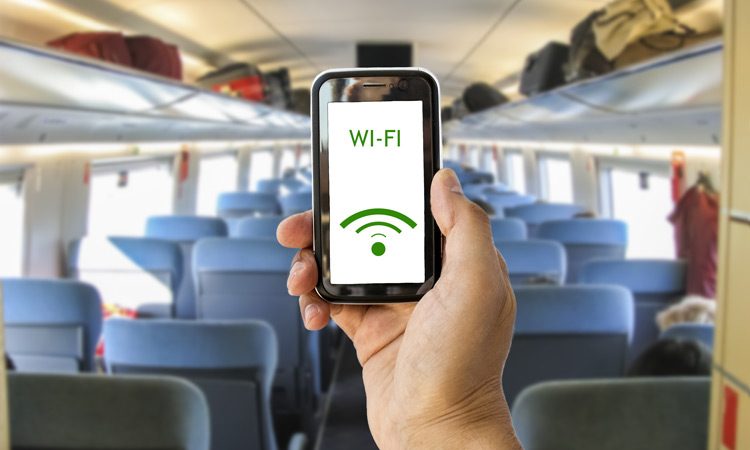Mind the Wi-Fi experience gap: Upgrading technology to reap the rewards
Posted: 15 August 2019 | Chris Bruce | No comments yet
Chris Bruce, Managing Director of GlobalReach Technology looks at solutions to solve rail Wi-Fi problems which can lead to improving the experience for both passengers and train operators.


Connecting to rail Wi-Fi can be a challenge. Passengers are frustrated by having to reconnect to different services and commuters’ smartphones struggle to know which signal to use when trains from two different train operating companies are at adjacent platforms. With connectivity developments, these glitches are unnecessary, easy to fix and, using Hotspot 2.0 Wi-Fi roaming, create a revenue stream to compensate train operating companies and fund a connected passenger journey.
There’s no reason why passengers moving between trains cannot register once and stay connected. Hotspot 2.0 solves the problem using a more secure connection via an encrypted radio link from handset to Wi-Fi access point. The technology standards and supporting hardware are available now.
Both the passenger and rail operator experience can be improved through faster and more reliable Wi-Fi. This was our recommendation earlier this year to the Williams Rail Review.
Simple, stress-free and seamless rail Wi-Fi
Using Hotspot 2.0 and with simple roaming agreements in place, passengers can register for Wi-Fi once and move seamlessly between services. By downloading a one-time provisioning file to their device which configures Wi-Fi settings and encryption, passengers’ devices will automatically connect to Wi-Fi on whatever train, route or rail operator they are using.
Returning commuters’ devices are ‘remembered’ and automatically connect daily. The experience is made possible by a mature Hotspot 2.0 technology standard, which has been available since 2014.
A passenger engagement channel
Better Wi-Fi is also a channel to improve passenger communication about delays and cancellations. General messages can be sent to supplement PA announcements reducing the stress of service disruption. A reliable connection will also occupy passengers for entertainment or work, further improving customer satisfaction.
Better Wi-Fi security
Commuters are potentially vulnerable to man-in-the-middle attacks. Hotspot 2.0 reduces this risk using higher levels of user security by authenticating the subscriber’s connection with credentials provided by their mobile operator on the device SIM or via online signup (OSU) validation. This way train operating companies meet all CSP (Communications Service Provider) and ISP (Internet Service Provider) regulations for providing the service.
Some Wi-Fi operators authenticate users for seamless login with the Media Access Control (MAC) addresses of a previously connected device. But device-to-access point communications are unencrypted with this method and many operating systems updates ‘randomise’ MAC authorisation on many devices for other security reasons forcing returning users to log-in each time, adding time and effort. Hotspot 2.0 overcomes this using encryption between the Wi-Fi access point and the user’s device.
The upside for train operators
Better Wi-Fi is also better for rail operators. The seamless user experience, combined with better ‘in-carriage’ coverage, makes services in high demand by mobile carriers, aggregators and other service providers grow coverage footprints and enable offload.
Through roaming agreements, passengers have secure and automatic Wi-Fi access whatever their journey and rail operators retain their existing SSID, portal and user experience using a roaming feature called RCOI. This is Roaming Consortium ID allows all parties to roam across different Wi-Fi networks which is good news for all. Third parties can roam or offload data for a fee, which could contribute to funding a world-class connected passenger journey.
The future of rail connectivity
Upgrading Wi-Fi authentication and policy management across railway infrastructure can enhance the passenger experience and improve satisfaction levels. Hotspot 2.0 and collaboration can make this happen.
This simple upgrade can make huge improvements possible. By keeping passengers connected across the network, train operating companies can maximise customer satisfaction and reap the rewards.








